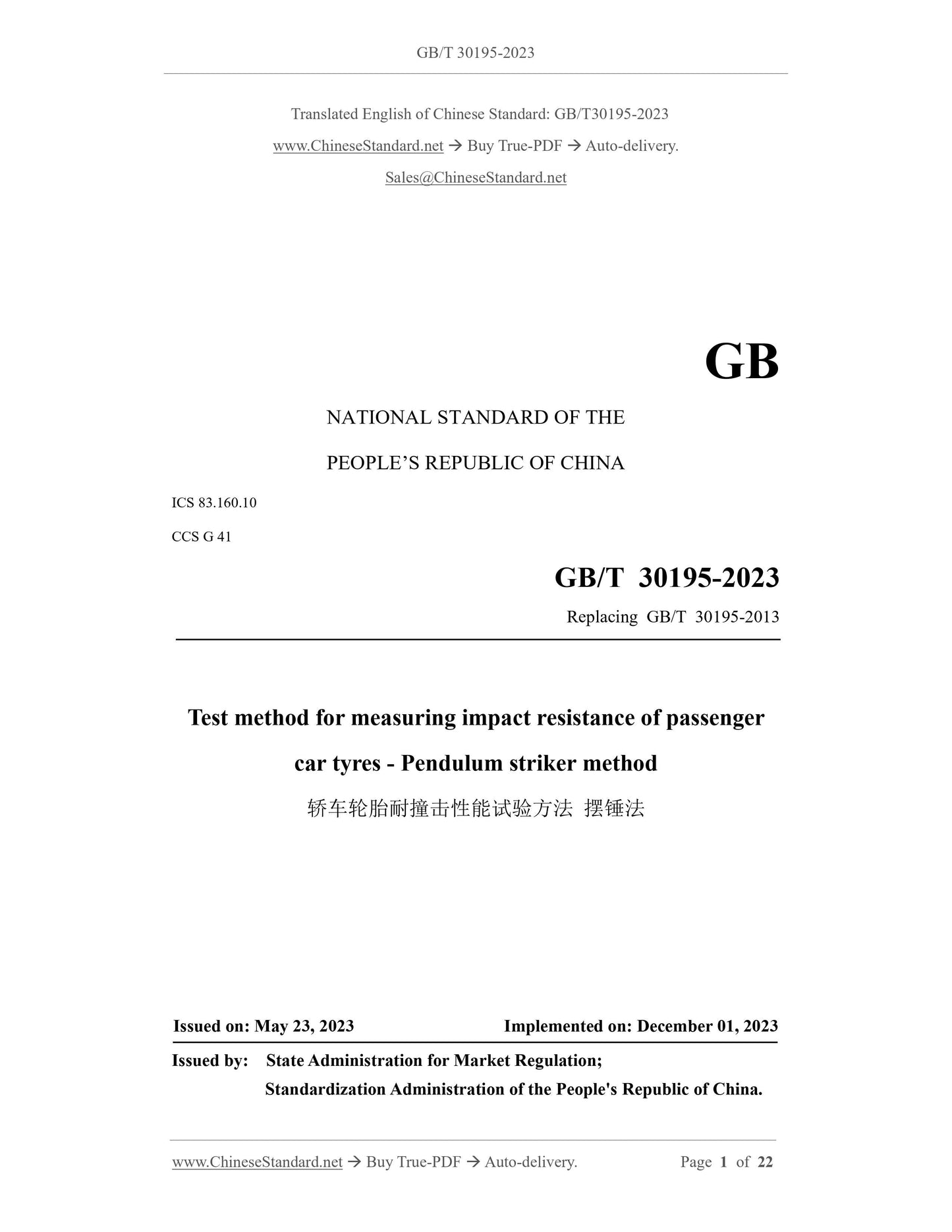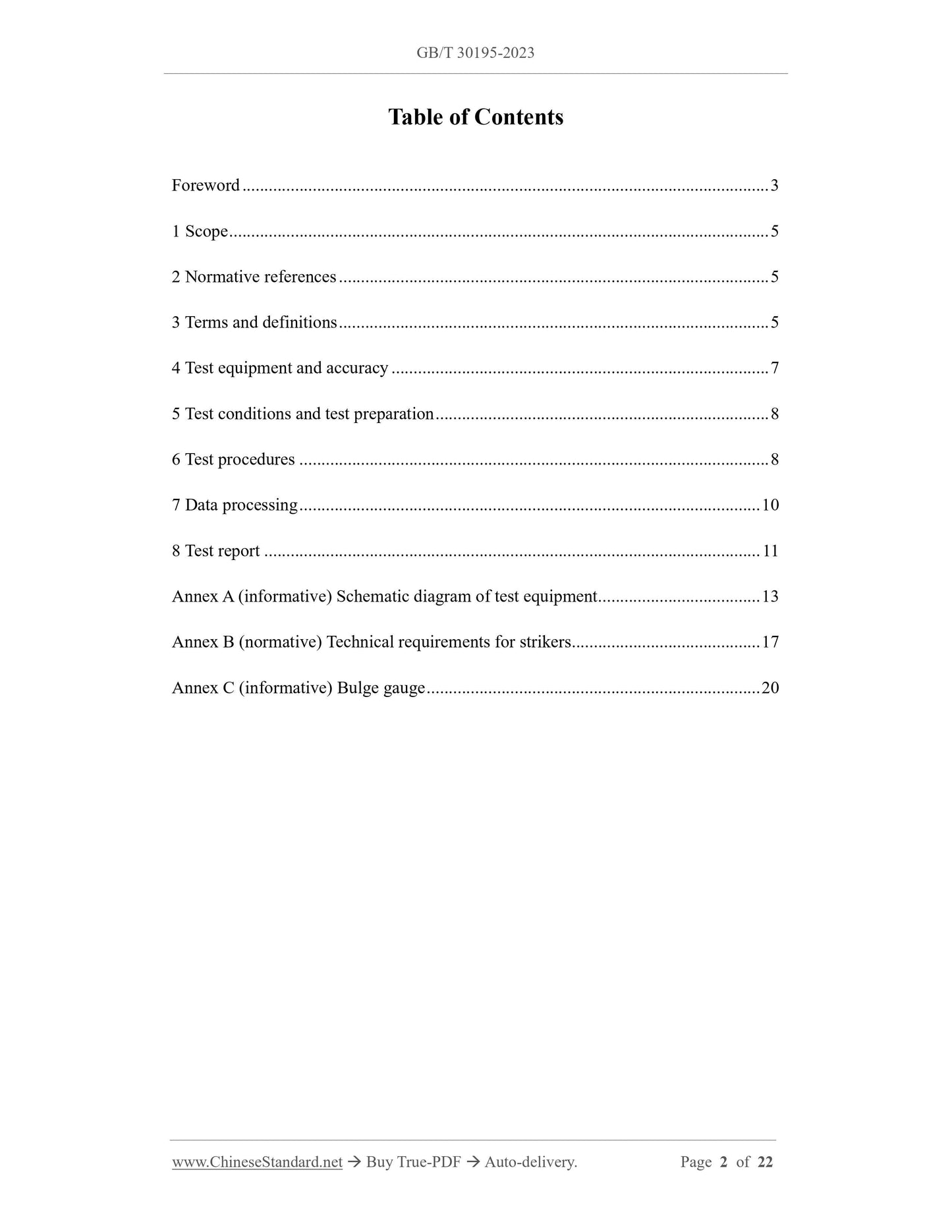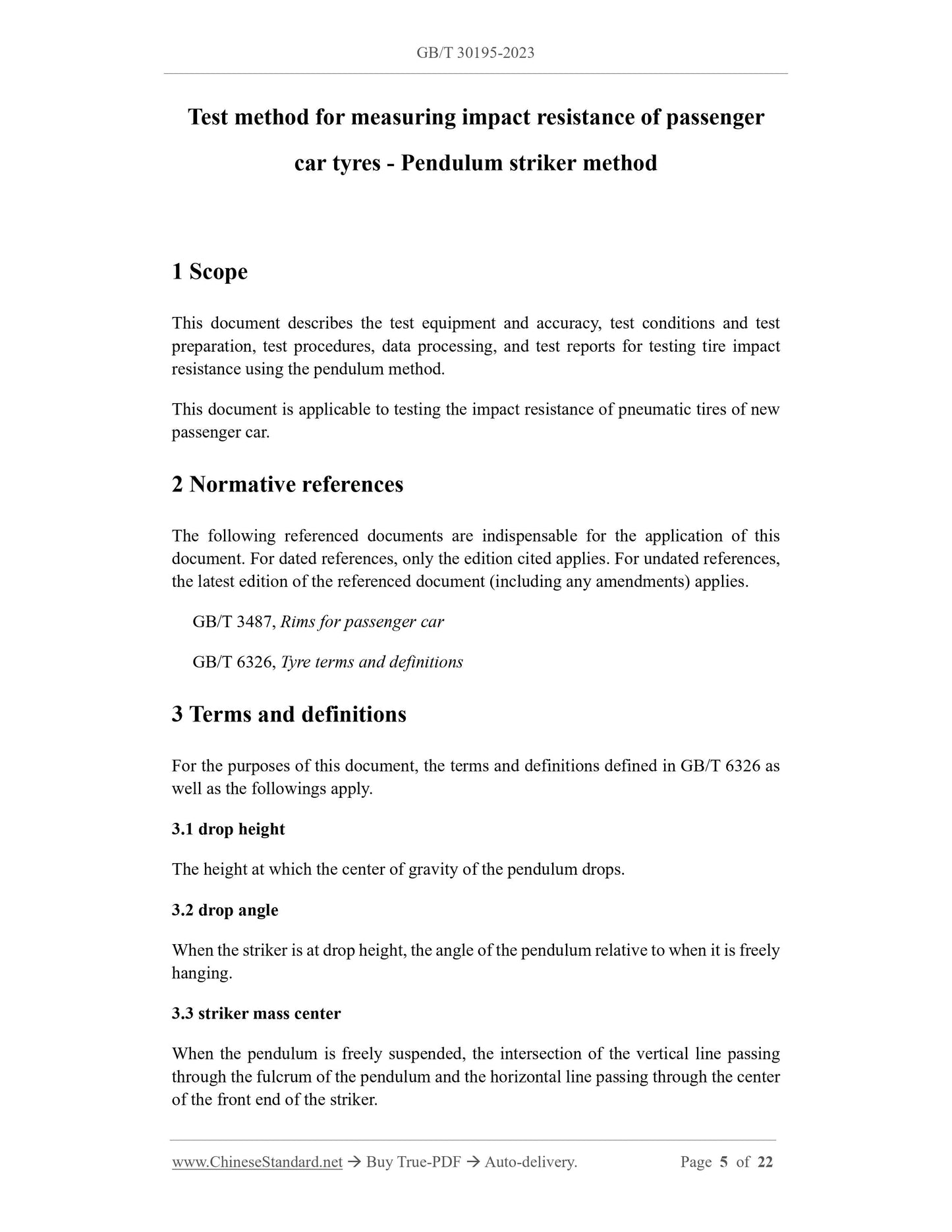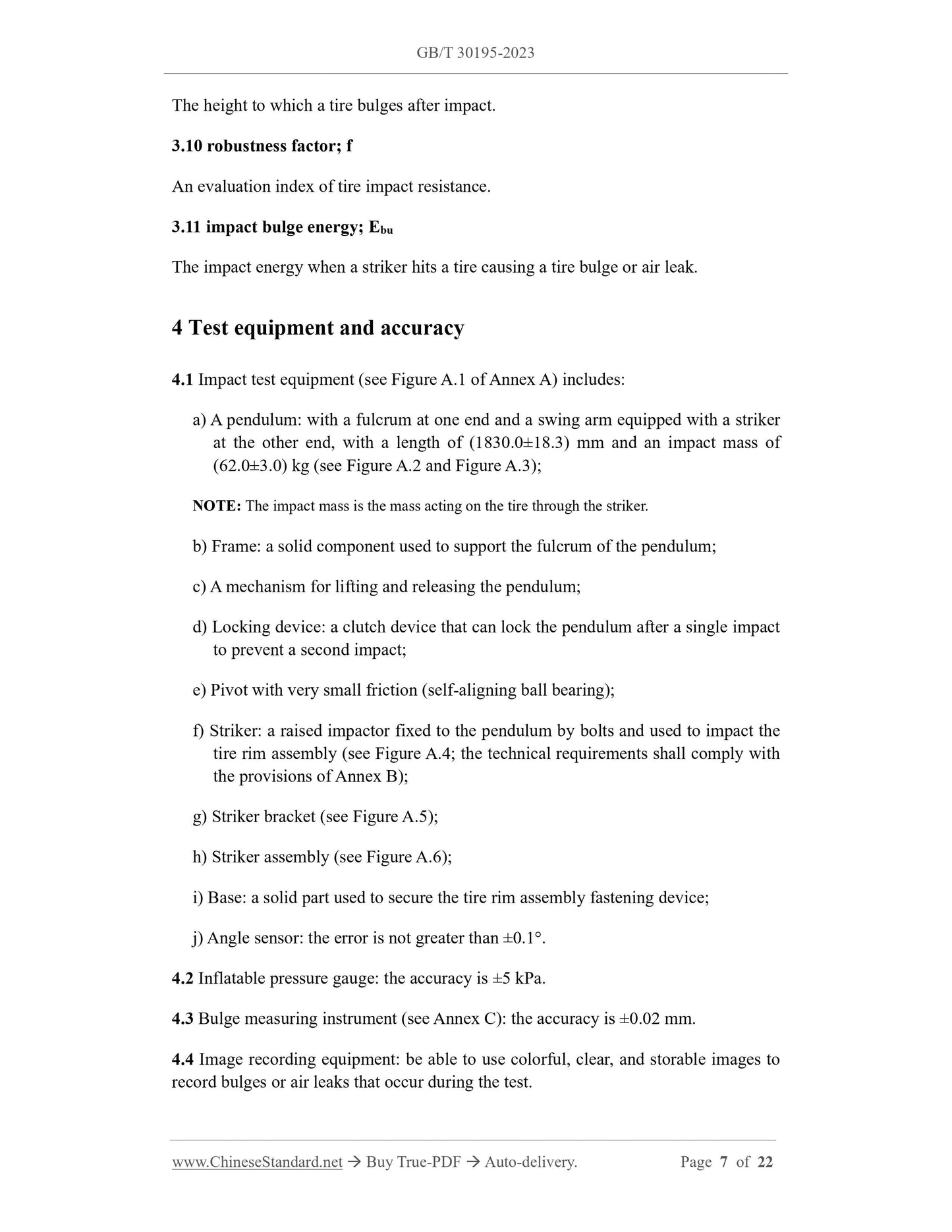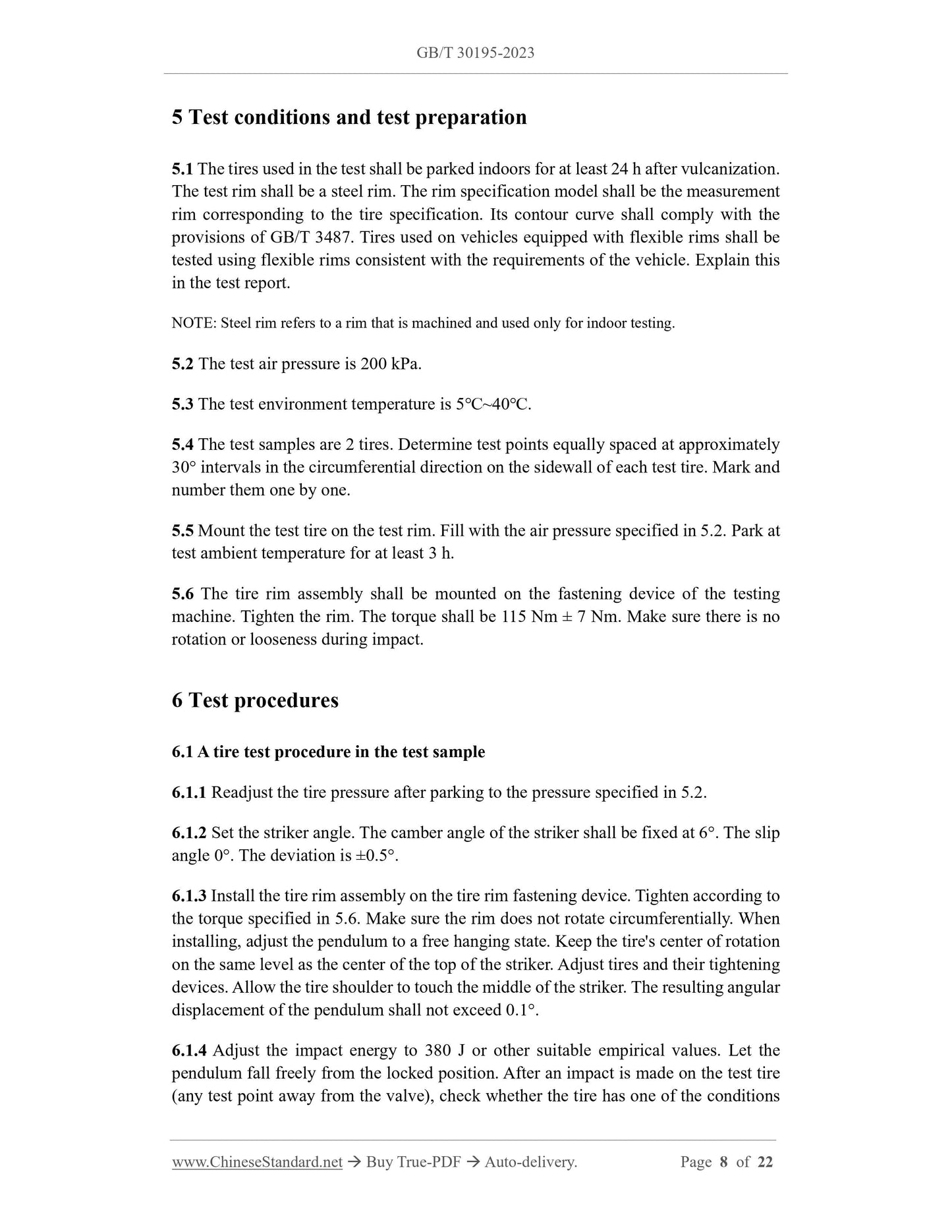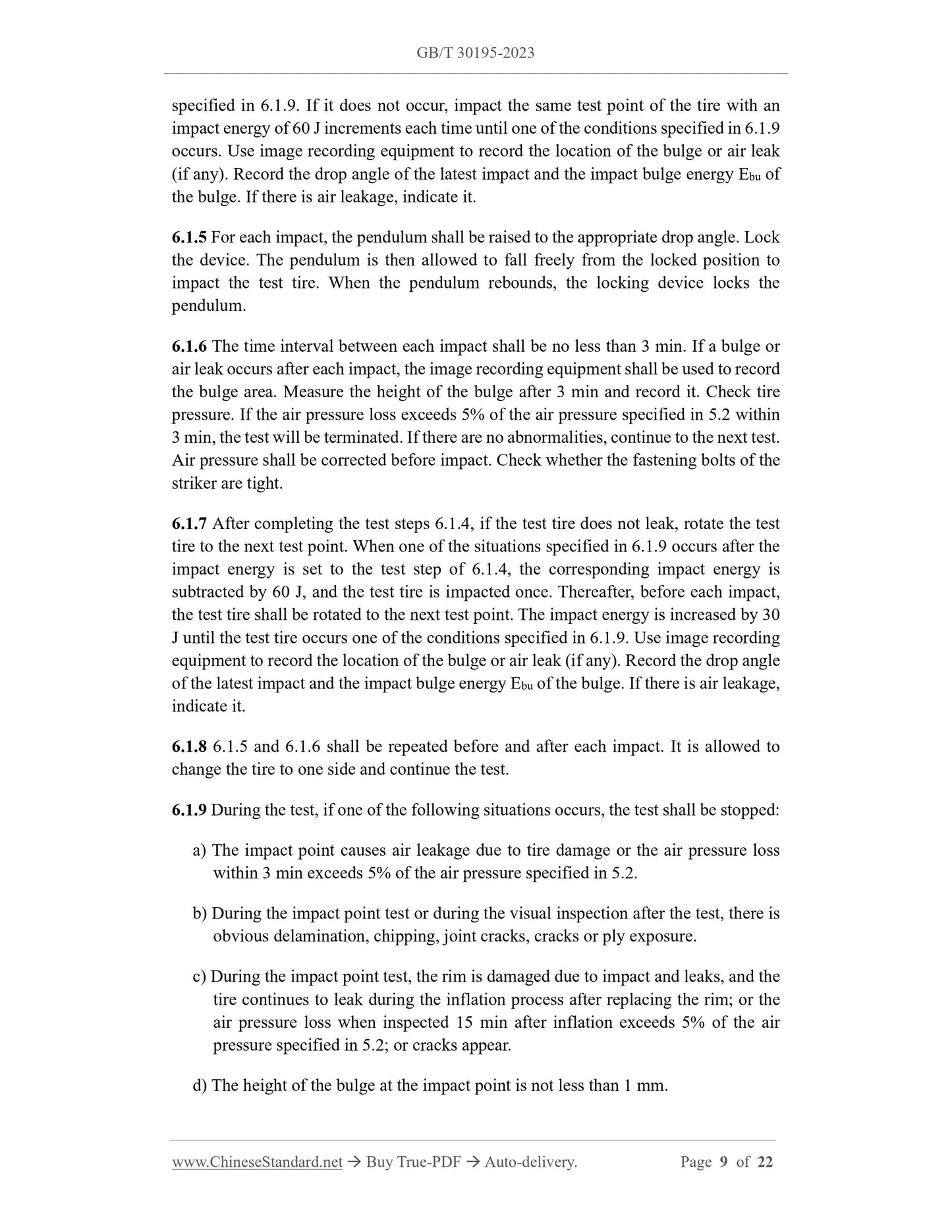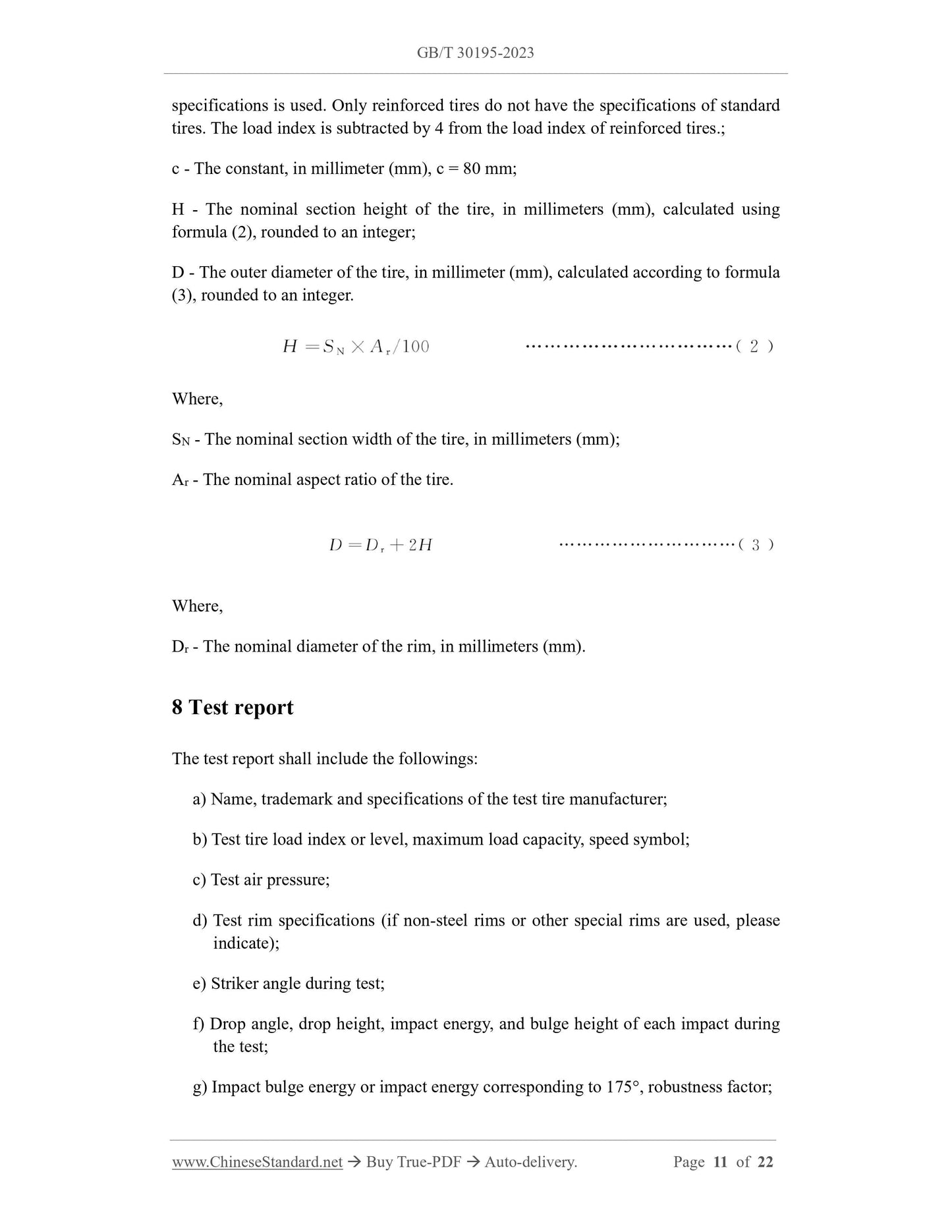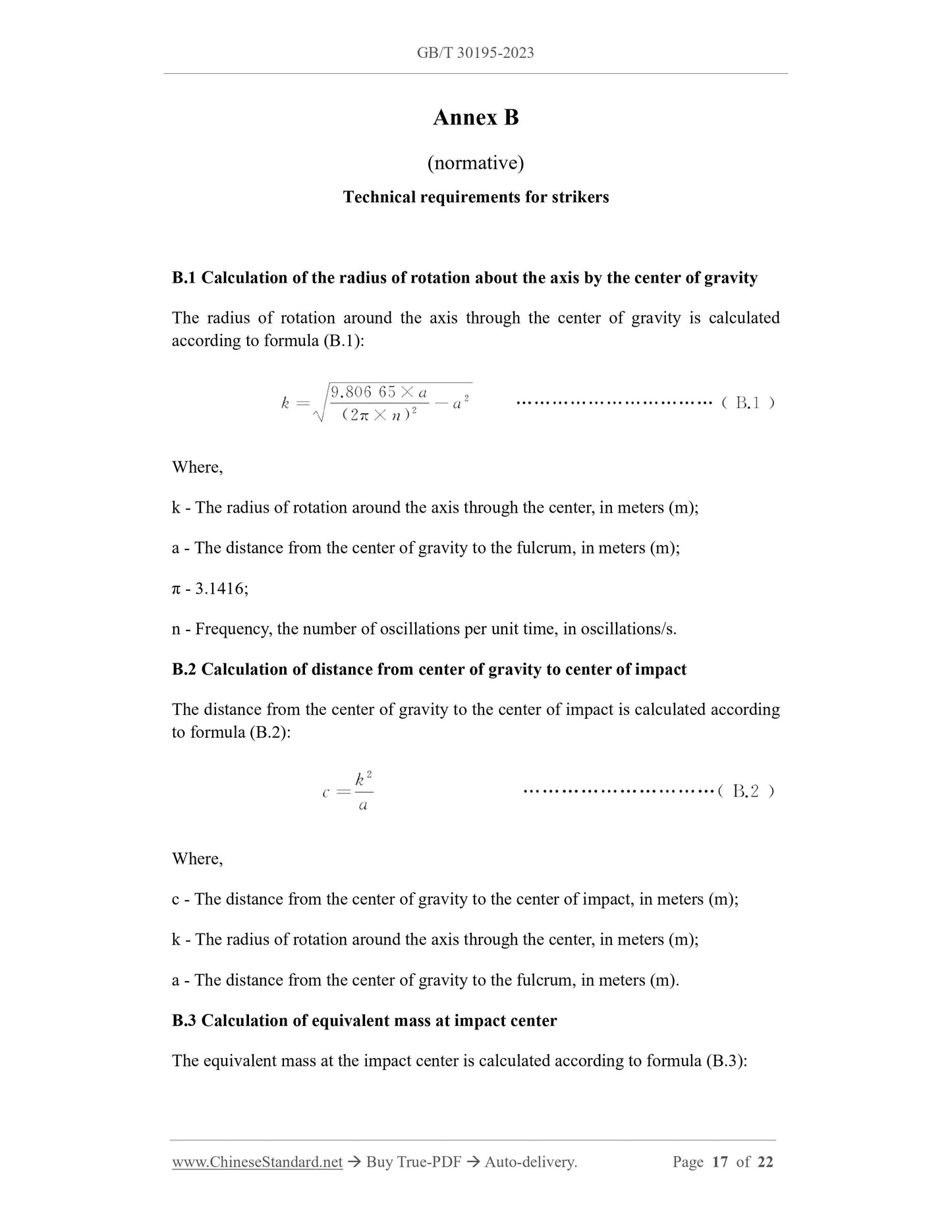1
/
of
8
www.ChineseStandard.us -- Field Test Asia Pte. Ltd.
GB/T 30195-2023 English PDF (GB/T30195-2023)
GB/T 30195-2023 English PDF (GB/T30195-2023)
Regular price
$245.00
Regular price
Sale price
$245.00
Unit price
/
per
Shipping calculated at checkout.
Couldn't load pickup availability
GB/T 30195-2023: Test method for measuring impact resistance of passenger car tyres - Pendulum striker method
Delivery: 9 seconds. Download (and Email) true-PDF + Invoice.Get Quotation: Click GB/T 30195-2023 (Self-service in 1-minute)
Newer / historical versions: GB/T 30195-2023
Preview True-PDF
Scope
This document describes the test equipment and accuracy, test conditions and testpreparation, test procedures, data processing, and test reports for testing tire impact
resistance using the pendulum method.
This document is applicable to testing the impact resistance of pneumatic tires of new
passenger car.
Basic Data
| Standard ID | GB/T 30195-2023 (GB/T30195-2023) |
| Description (Translated English) | Test method for measuring impact resistance of passenger car tyres - Pendulum striker method |
| Sector / Industry | National Standard (Recommended) |
| Classification of Chinese Standard | G41 |
| Classification of International Standard | 83.160.10 |
| Word Count Estimation | 16,144 |
| Date of Issue | 2023-05-23 |
| Date of Implementation | 2023-12-01 |
| Older Standard (superseded by this standard) | GB/T 30195-2013 |
| Issuing agency(ies) | State Administration for Market Regulation, China National Standardization Administration |
Share
